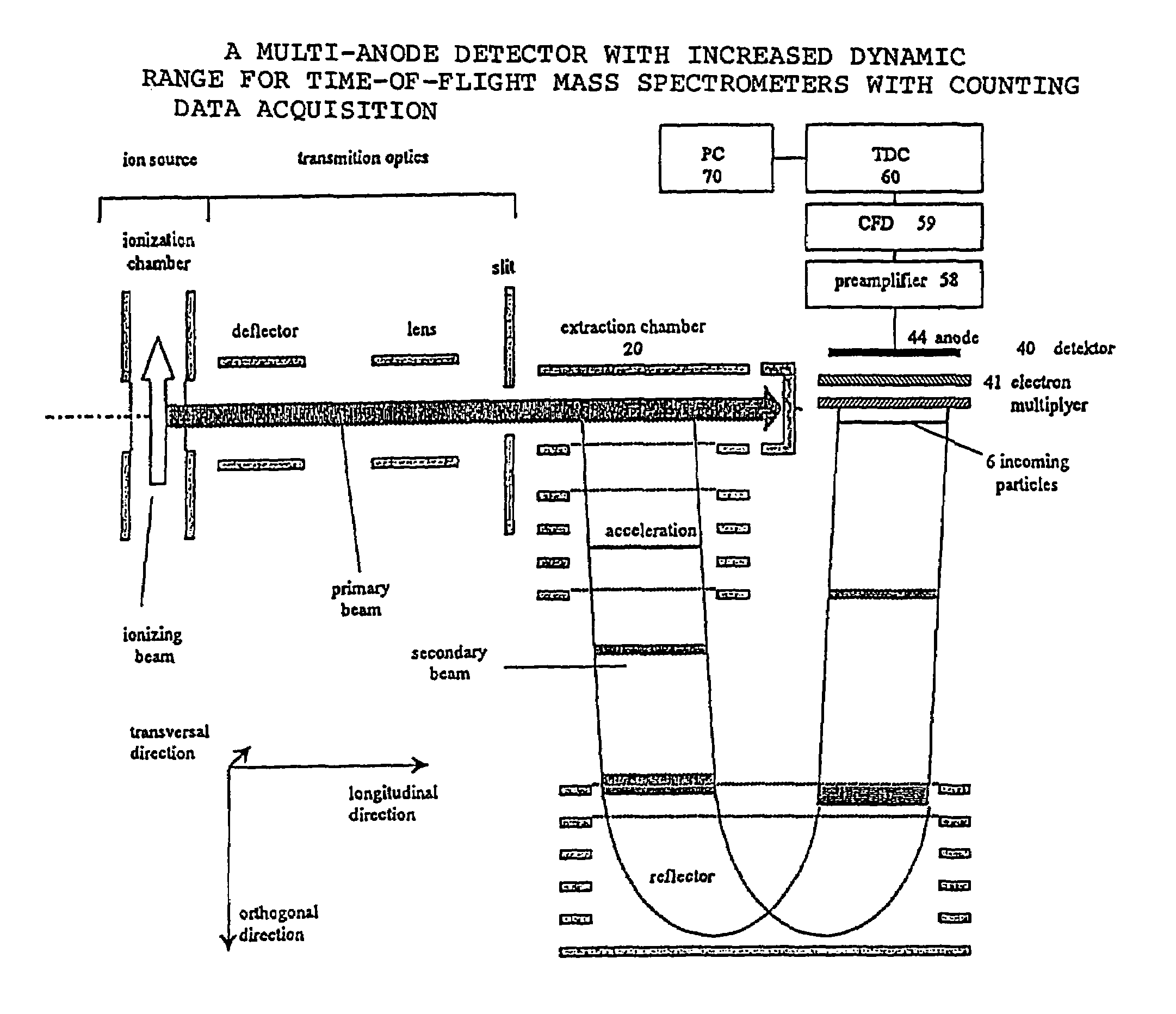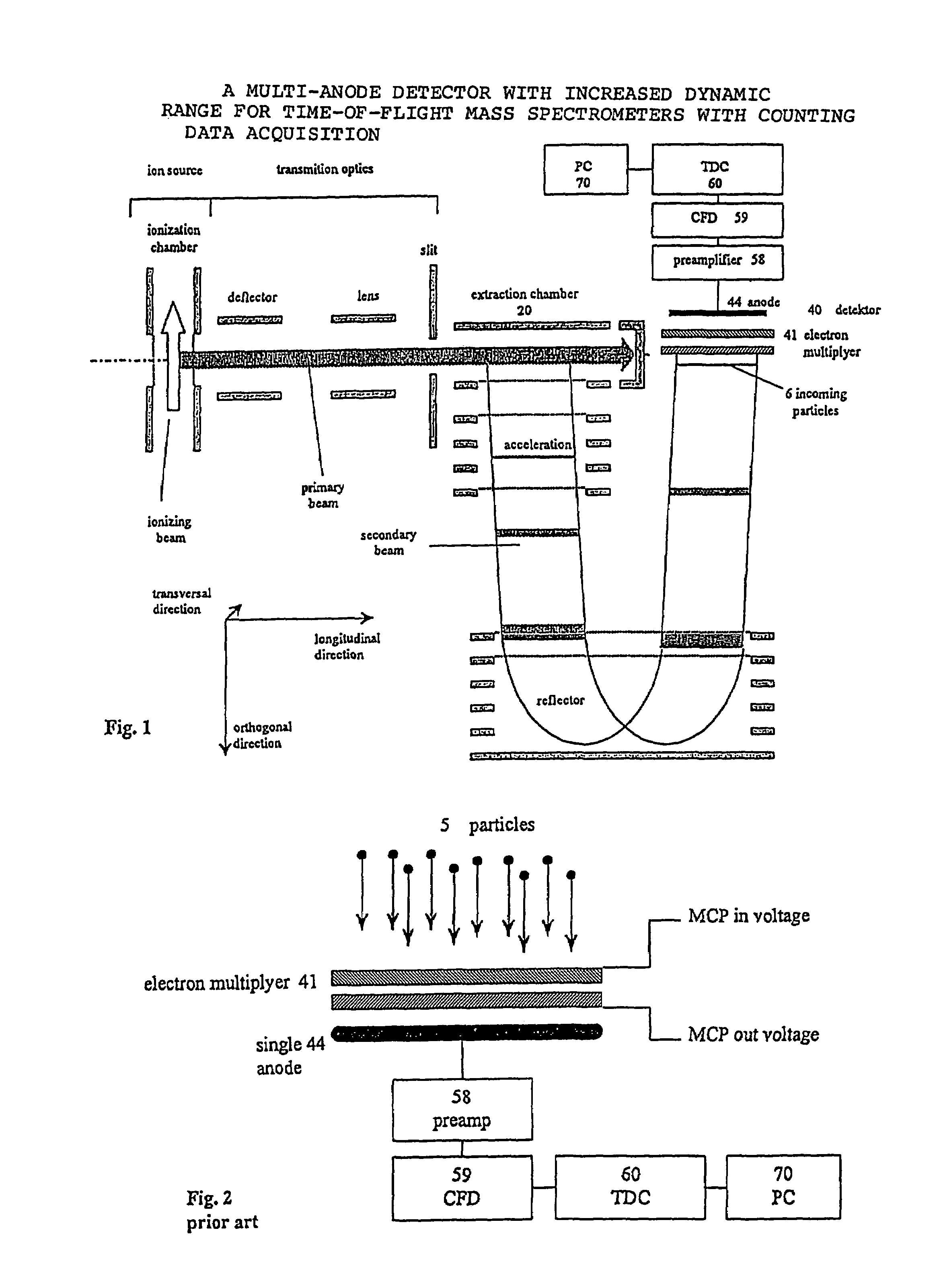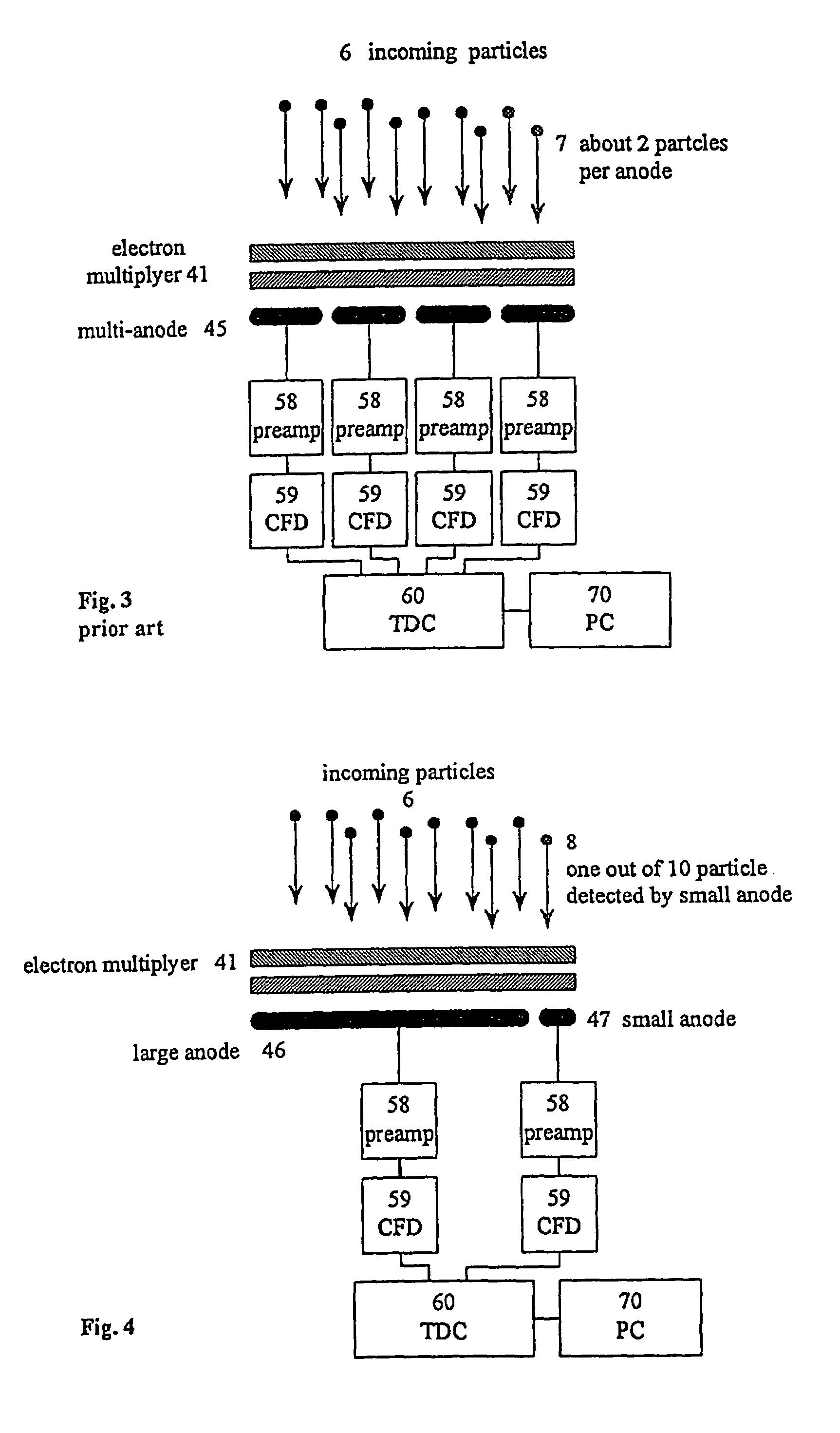Multi-anode detector with increased dynamic range for time-of-flight mass spectrometers with counting data acquisition
a multi-anode detector and counting data technology, applied in the field of multi-anode detectors with increased dynamic range for time-of-flight mass spectrometers with counting data acquisition, can solve the problems of no deadtime being able to detect all these particles, complex solution, and inability to distinguish two or more particles of the same specie arriving simultaneously at the detector, etc., to achieve low statistical errors, reduce the anode fraction, and eliminate the effect of saturation
- Summary
- Abstract
- Description
- Claims
- Application Information
AI Technical Summary
Benefits of technology
Problems solved by technology
Method used
Image
Examples
Embodiment Construction
[0024]Referring now to FIG. 1, a typical TOFMS is shown. In the depicted TOFMS, gaseous particles are ionized and accelerated into a flight tube from an extraction chamber 20. Some TOFMS, such as the one illustrated, use reflectors to increase the apparent length of the flight tube and, hence, the resolution of the TOFMS. At the detector of the TOFMS 40, ions 6 impinge an electron multiplier 41 causing an emission of electrons. Anodes 44 detect the electrons from the electron multiplier 41 and the signal is then processed through a preamplifier 58, a CFD (constant fraction discriminator) 59, and a TDC 60. A histogram that reflects the composition of the sample is generated either in the TDC 60 or in a digital computer (PC) 70 connected to the TDC 60.
[0025]One preferred embodiment of the present invention is shown in FIG. 4. In this embodiment, unequal-sized anodes 46 and 47 are used in the detector. The detection fraction of the small anode is small enough so that on average it dete...
PUM
 Login to View More
Login to View More Abstract
Description
Claims
Application Information
 Login to View More
Login to View More - R&D
- Intellectual Property
- Life Sciences
- Materials
- Tech Scout
- Unparalleled Data Quality
- Higher Quality Content
- 60% Fewer Hallucinations
Browse by: Latest US Patents, China's latest patents, Technical Efficacy Thesaurus, Application Domain, Technology Topic, Popular Technical Reports.
© 2025 PatSnap. All rights reserved.Legal|Privacy policy|Modern Slavery Act Transparency Statement|Sitemap|About US| Contact US: help@patsnap.com



